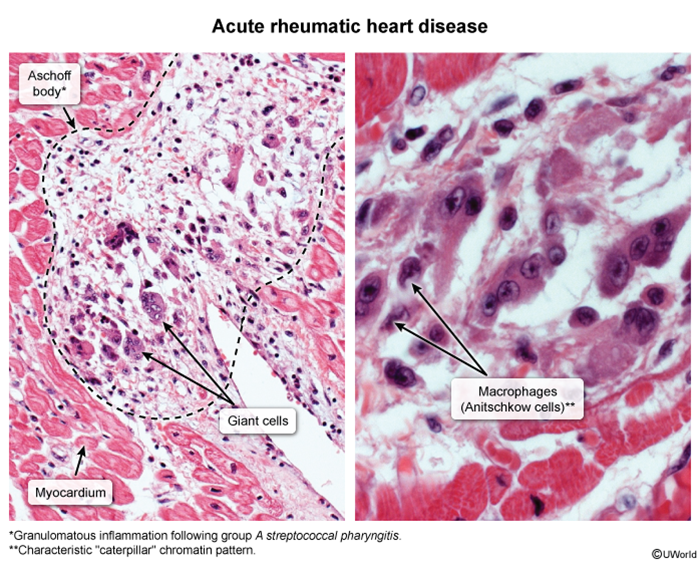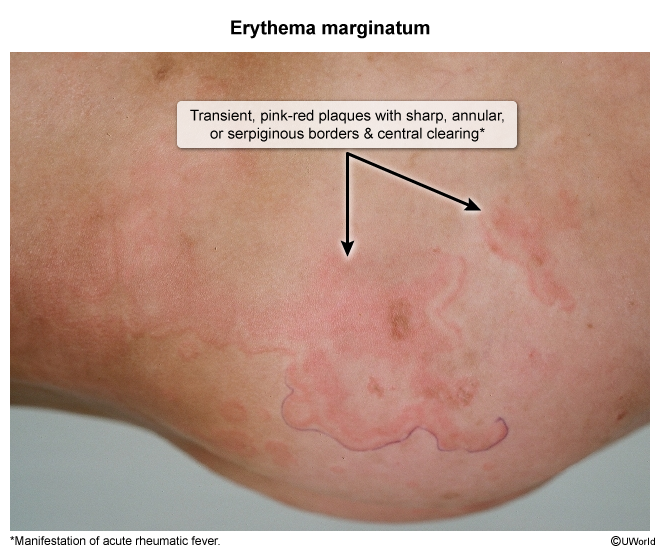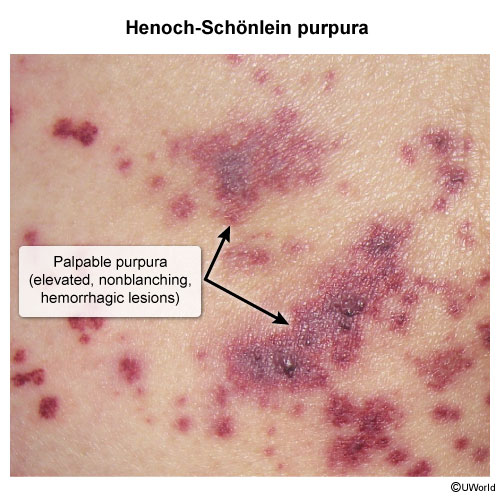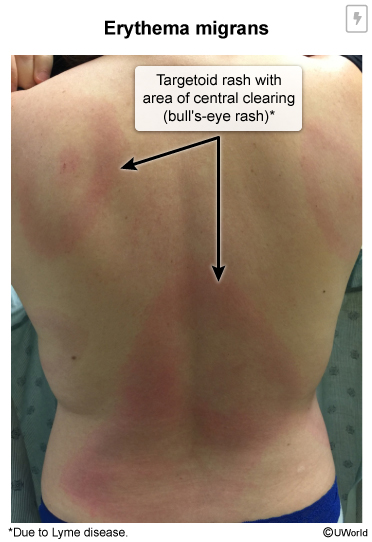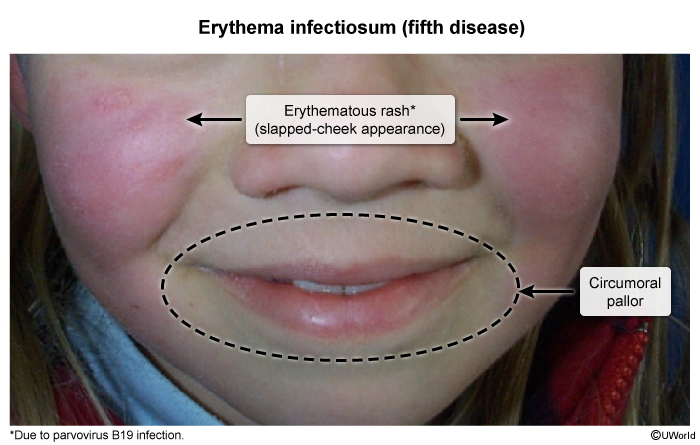Acute Rheumatic Fever
Article Sections
Introduction
Acute rheumatic fever (ARF) is an autoimmune disease that develops after untreated group A Streptococcus (GAS) pharyngitis. It most commonly affects children and adolescents with major manifestations including arthritis, pancarditis, Sydenham chorea, erythema marginatum, and subcutaneous nodules.
Pathogenesis
ARF is a nonsuppurative, immune-mediated complication of an untreated group A Streptococcus (GAS) pharyngitis. Antibodies against GAS cross-react with host tissues due to molecular mimicry between GAS antigens and cardiac and central nervous system antigens (Figure 1). Specifically, antibodies directed against GAS antigens (eg, M protein) attack cardiac proteins (eg, myosin) and neuronal cell surface proteins (eg, lysoganglioside in the basal ganglia).
Morbidity and mortality is primarily related to inflammation of endocardium, myocardium, and epicardium. ARF is associated with development of cardiac interstitial granulomas consisting of lymphocytes and macrophages as well as scattered multinucleated giant cells, or
Continue Learning with UWorld
Get the full Acute Rheumatic Fever article plus rich visuals, real-world cases, and in-depth insights from medical experts, all available through the UWorld Medical Library.
Figures
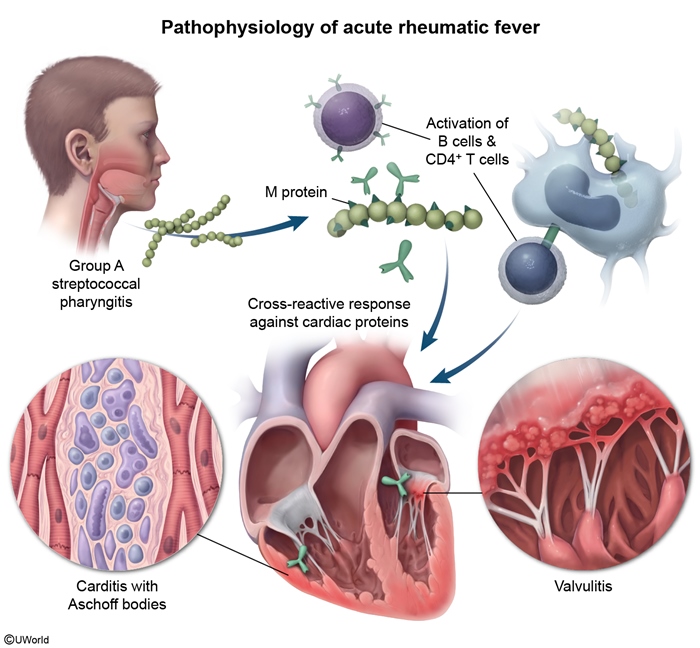
Images
